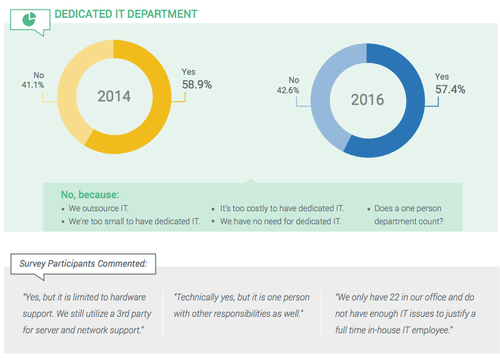If you can picture it, you can build it…
This week, as builders by the thousands visit Las Vegas for the Associated General Contractors of America‘s Annual Convention, for the first time they will have the option to stay longer for a one-day Technology Summit. Hosted by the AGC-IT Forum, the event may seem overdue to some, but its addition to the packed agenda is still indicative of the growing influence that technology continues to have on both the business and practice of modern construction.
“The virtual design and construction (VDC) role is becoming more and more popular, so it’s definitely in high demand now,” notes AGC CIO C. Fara Francis, whom BuiltWorlds interviewed at length last month. Having joined AGC in 2006, Francis launched AGC-IT Forum’s separate summer conference in 2009, which last year drew more than 300 attendees to Chicago. “It has grown every year,” she noted.

That time frame roughly tracks with the surge in contractor interest in BIM and other tech aids for the building process that engineer-turned-VDC specialist Jason Reece observed from his perch at Balfour Beatty Construction, where he worked from 2003 to 2016. “There has been a real increase ongoing for the last seven years, I’d day, and it is still going,” says Reece, now business unit leader for technology and process development at The Digit Group (TDG). “Most movement now is probably contractor-to-contractor, so there has been a lot of job-hopping,” he adds.
That latest flurry has included some prominent names, like Stacy Scopano, an AEC thought leader who left Autodesk in January to become Skanska USA‘s new VP of Innovation. Still based in Atlanta, Scopano joined the Swedish multinational’s U.S. contracting arm after five years as a senior strategist for building construction with Autodesk. His hire seems symbolic of the 50,000-person global firm’s determination to be more self-reliant with its technology.
- Below, Scopano’s keynote from our 2016 CEO Forum. Learn about BW’s 2017 Summit here.

Also in January, AEC Hackathon board member Steve Holzer formally joined Sweden’s BIMobject as “product evangelist,” a role he relishes for promoting its network of BIM-enabling platforms for digital content management. The firm’s North American headquarters is in St. Louis. Just two months earlier, Holzer’s friend and AEC Hackathon co-founder Damon Hernandez landed at Samsung Electronics, where he is now focusing on immersive WebVR.
Since last summer, other industry tech moves have seen VDC chief Kevin Bredeson leave Pepper Construction to join Suffolk Construction; Jennifer Suerth leave Mortenson essentially to take Bredeson’s place and expand tech services at Pepper; project manager Casey Bell leave Turner Construction to co-found Net30, a web-based workflow for simplified invoicing; and longtime McHugh Construction alum Brian Anson leave theme-park builder Nassal Company to become COO at software specialist StratusVue. In late 2015, HOK‘s “firm-wide design technology specialist” Brok Howard also left that architect-engineer to become implementation lead for dRofus, a maker of integrated planning and data management software for the building lifecycle. The firm was acquired in January by German AEC tech giant Nemetschek Group.
- Order new business cards: Above, from left, Bredeson, Suerth, Bell, Anson, and Howard.
Fluid HR dynamics
Granted, all that movement is just a portion of the total picture as the tech segment of the AEC industry continues to see dynamic growth in startups, and sporadic spurts among contractors and design firms. Indeed, there is a much activity among builders, but much of it is lateral from firm to firm. Reece says that is clearly because the structure for advancement is not yet there in most firms for their tech staff to move up into management. “There are no CTOs in this industry that I am aware of,” he says. “Firms still tend to undervalue their tech assets and they lose people when they have no where else to grow.”
The disparity in skill sets also contribute to the turnover, he adds. “There is a definite scarcity at the entry level, so there is a supply chain problem for tech hires, especially those that understand construction,” Reece explains. “I mean, you can bring kids in from the gaming industry, but they don’t understand construction practices, so how are you going to keep them interested?”
Rosendin Electric CIO Sam Lamonica agrees. Last June, in a blog entitled, The Challenge of Retaining IT Talent in the Construction Industry, he wrote: “To me, having business acumen and a deep understanding of our company mission is more important and more powerful than most technology skills. Through training, mentoring, and partnerships, I can train most people up into many of the newer technologies.”
“there is a definite scarcity at the entry level, so there is a supply chain problem for tech hires, especially those that understand construction”
Similarly, Reece believes contractors are better off teaching the technology to young engineers already on board, which is the path he had taken at Balfour Beatty. But even then, many firms continue to regard VDC work as an arm of marketing, and/or a skill set non-essential to core operations. So, as some mid-size contractors like Mortenson, Rogers-O’Brien Construction, and Gilbane Building Co. continue to grow their tech staffs, others are still moored to the ebb and flow of market fluctuations.
In fact, that reality was still reflected in JBKnowledge Inc.’s latest Construction Technology Report released in December. Based on responses from more than 1,500 contractors and subcontractors, the research found that “only companies with more than 100 employees and over $50 million in annual sales volume are companies likely to have a dedicated IT department.” And while 36% of respondents had increased their IT staff in 2016, 47% had maintained staff size, and 5.5% had actually decreased.

Still, despite the ongoing back and forth, there remains a sense of inevitability to the long-term prospects for tech staffing at contractors. And part of that is being driven by the centuries-old differences between builders and architects. For example, Holzer claims contractors are filling a void in the market, stepping up in areas that many designers still seem reluctant to embrace.
“More contractors are grabbing and using the technology now, and as a result, they are the ones dealing directly with owners,” he says. And the shift is altering the traditional owner-architect relationship. “Construction managers and design-build firms are the ones hiring the architects now, in part because many architects still insist on seeing technology just as a way to do digital drawings, not to manage and improve the process,” says Holzer. “If they continue to be blacksmiths, then contractors have to step in.”
To combat that mindset, and engage its own younger members, the American Institute of Architects (AIA) will offer a raft of tech education options at the group’s upcoming annual convention next month in Orlando. Those who arrive a day early will be able to choose from seven tech-focused workshops, including a half-day, mini hackathon.
So, across the AEC, the race is heating up to find, train, utilize and retain tech talent. Unless more formalized ways can be found to reward and promote the high performers, though, our industry may be fated to keep spinning its wheels as it scrambles to restock both ends of the supply chain.








Discussion
Be the first to leave a comment.
You must be a member of the BuiltWorlds community to join the discussion.